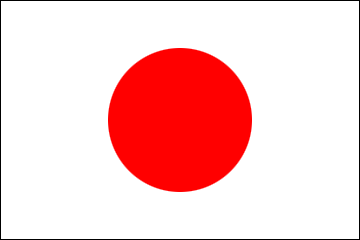Through the Eyes of the former Consul General Yamada (June, 2017 - July, 2020)
2019/7/2

Two Cherry Blossom Festivals - Part 2: Sakura Matsuri
In the previous column, I wrote about Sakura-Con – an event centered on Japanese anime and manga. This time, I will talk about the Seattle Cherry Blossom and Japanese Culture Festival, or Cherry Blossom Festival/Sakura Matsuri that was held at Seattle Center from April 19 to 21. Nearly two months have passed since this event… Sorry!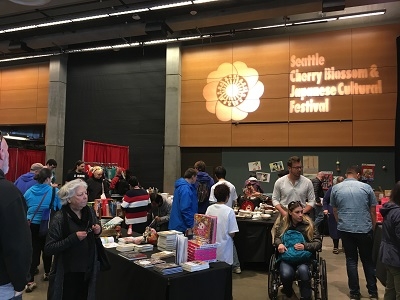
On the occasion of the bicentennial of U.S. independence in 1976, the Japanese government gifted 1,000 cherry blossom trees to the city of Seattle as a gesture of U.S.-Japan friendship. Takeo Miki, Prime Minister at the time, took this initiative. Prime Minister Miki studied in the U.S. in the 1930s and while residing in Seattle, he worked as a dish washer for the oldest Japanese restaurant in the country that still continues to this day, Maneki.
Receiving the donation of cherry blossoms, the then Seattle mayor asked the local Japanese community to organize an event that would showcase Japanese culture. That was the first Sakura Matsuri and it has continued every year since. The first festival was held in Seward Park, but was moved to its current location at Seattle Center in 1979, celebrating 40 years there this year.
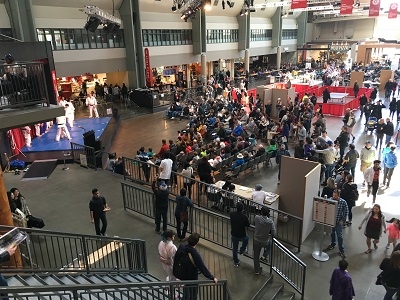
The two individuals who have continued to organize the event since then are husband-and-wife duo Yutaka and Tazue Sasaki. Currently, 100 organizations and 800 volunteers participate and it attracts more than 20,000 visitors. There are many students who visit on field trips to experience Japanese culture. At Sakura Matsuri, you can see many traditional cultural arts like ikebana, calligraphy, go, martial arts, kimono, origami, dance, etc. You can also observe the production and demonstration of rare traditional crafts such as temari and ami-himo. My son attended the Hyogo Banshu Soroban (Abacus) Company workshop and created an abacus.
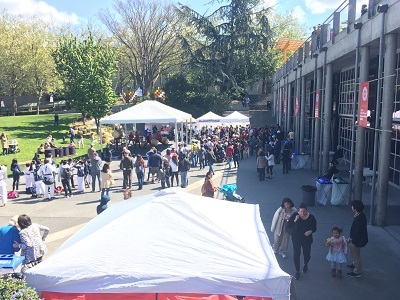
At Sakura Matsuri, there are also booths that sell crafts and accessories related to Japan and there are many customers looking for bargains. I found a book on sushi, so I bought it. Speaking of shopping, I bought a knife manufactured in Sakai; my wife was impressed by how sharp it was. You can eat street foods like takoyaki and gyudon while walking around and enjoying the festival. It seems like Japanese food stands are quite popular among Americans. At Seattle Center, you could see many American families enjoying takoyaki and curry rice, sold near the stage where taiko performances were held.
During that weekend, the Yae cherry blossoms seemed to have been past their blossoming stage at Seattle Center. Young cherry trees in general do not look alluring immediately, but they will grow and bloom beautiful flowers over time. Those who enjoy the beautiful blossoming flowers of the matured cherry tree in later years will come to know the wishes of those of the past who first donated the young saplings. Tree planting, in a way, is very similar to international youth exchange; it is a manifestation of a kind heart that attempts to cultivate some good for the next generation. Prime Minister Miki, who spent his time in Seattle feeling that the relationship between Japan and the U.S. deteriorated while he was there, was a politician who had a strong conviction to improve U.S.-Japan relations. Against his wishes, Japan and the United States had a war that resulted in millions of victims. I cannot help but feel deep respect for the thoughtfulness of a man who became Japan’s prime minister 30 years after the war and who gave cherry blossom trees to America wishing for mutual understanding and friendship for future generations.
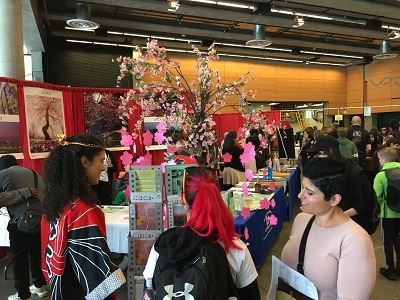
Sakura Matsuri’s tradition and Sakura-Con’s pop culture. The two events are very different, but share similar roots. If you explore your interest in Japanese food and calligraphy after looking at the bento and handwriting that appear in manga and anime, you will find a deep world of traditional culture waiting for you. Japanese traditional culture seems to continue to be distinctively attractive in modern America where technology advances are fierce. Could there be something new that combines traditional culture and technology more directly? There is one plan for that next spring. Look forward to it.
